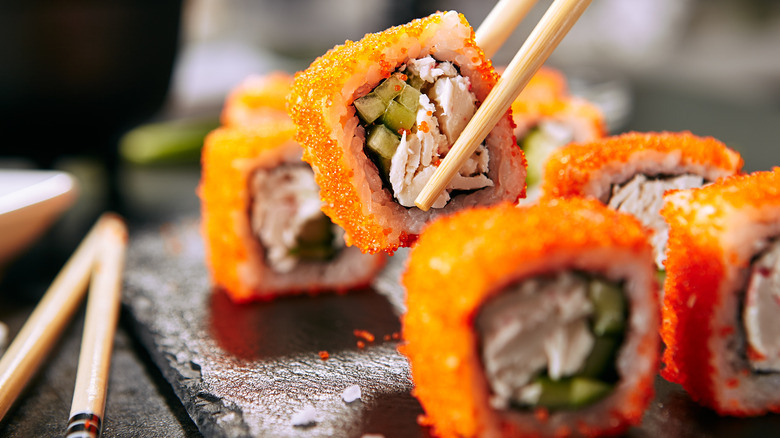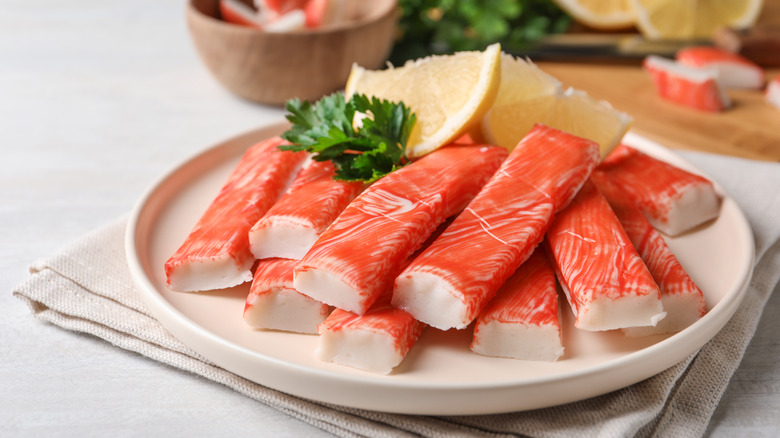What You Should Consider Before Using Imitation Crab
People disdain imitation meat. For example, Arby's, the long-time enemy of vegetarians and vegans, trolled the trend by making meat-based vegetables. "Plant-based meats are the latest incarnation of making vegetables look like what Americans really want, which is great, tasty meat," Jim Taylor, chief marketing officer for Arby's, told Fox News.
However, with imitation crab, all bets are off. The reason for imitation crab, Southern Living explains, is that crab is expensive, especially in non-coastal areas, which is what makes up most of the United States. So, if a restaurant is buying in bulk, it would be wise to turn to imitation crab. That's why many sushi bars and salad makers replace real crab with an imitation.
The concept actually originated in Japan and China, according to Fathom Seafood, again, due to its price and because it was in short supply. Crab cannot be farmed at the same scale as the demand.
Imitation crab is less nutritious
The issue is that even though imitation crab is not crab, it is still made from animals. Obviously, this represents a major difference between plant-based meat alternatives and the crustacean's substitute. According to Southern Living, imitation crab is commonly made from white fish, while American imitation crab is specifically made from Alaskan pollock.
Worse, Taste of Home notes that imitation crab isn't even as healthy as regular crab meat. It has larger amounts of sodium and carbohydrates. Fathom Seafood compared the two and discovered that imitation crab only has 13 grams of protein, less than half of the Dungeness crab's 28 grams.
However, if you do enjoy imitation crab, The Takeout notes that quality varies somewhat. Look for slightly translucent imitation crab instead of solid-colored. This is said to taste better, and as far as brands go, Osaki imitation crab sticks are apparently the best.

